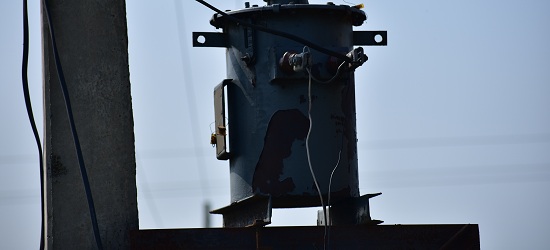India’s power sector needs to tune itself to meet the post-pandemic demand

By Prasad Nair
Posted on 07 Oct 2020
India’s power sector continued to stand
tall despite the relentless coronavirus induced lockdowns imposed by the centre
and state governments from time to time this year.
The union government’s ₹90,000 crore
liquidity injection to the cash-starved sector, announced in May this year, was
adrenaline for the state-owned discoms to clear off their dues as well as cover
up the losses incurred due to the fall in demand from the lockdowns. Back then
power industry analysts had said that there was some 30% reduction in demand
and with delays in revenue collection discoms were staring at a shortfall of ₹30,000
to 40,000 crores, or even more.
Confederation of Indian Industry (CII) in
its white paper Sustaining
India’s Power and Renewable Energy Sector in the Wake of Covid-19 estimates
the net revenue loss of ₹25,000 to 30,000 crores for discoms and increasing the
liquidity crunch from ₹45,000 to 50,000 crores. As per government data of
February 2020 discoms
already owed ₹92,602 crores to generation companies. CII in its analysis
presented many suggestions including easy credit facilities, the lower tariff
for industrial and commercial consumers, and deferral of indirect taxes such as
electricity duty, coal cess, to help discoms cope with this situation and
remerge stronger.
During the unlock phase industries
restarted their operations in a calibrated way and as economic activities began
gathering steam the adverse impact from the fall in demand due to Covid-19 began
diminishing. There was a big fall in demand when economic activities had
stalled in the initial periods of lockdown in April and May months. This is now
behind us and with industrial activities picking up further in the coming
months the power demand is likely to go up.
However, the sector unflinchingly continued
to generate and supply electricity to households and industries without fail,
wrote Jaideep Mukherji in
an article in the Financial Express.
Experts suggest that overhauling tariff
structure with lower commercial and industrial tariffs is the need of the hour
for a quick recovery to pre-Covid days. India needs to emulate countries such
as Germany, Japan, the United Kingdom, and the United States of America where
tariffs are lower. As India brings down its power tariff rates significantly
the power sector recovery can be perhaps accelerated.
As per the Ministry of Power estimates, the electricity
generation target of conventional sources for 2020-21 is 1330 billion units,
a growth of more than 6% as against 2019-20. Power sector think-tanks should
efficiently address flaws in distribution and ensure a reliable supply of power
for consumers for more significant growth. Power consumption with India’s
exploding population and increase in per capita usage is estimated to
reach 1,894.7 TWh by 2022, as per Ministry of Commerce & Industry
estimates. FDI inflow in power sector reached $14.98 billion from April 2000 to
March 2020.
More often than not, consumers would buy
new connections when they have access to uninterrupted power and this becomes
one of the key factors in increasing per capita power consumption. Moreover, the
power sector needs to augment and modernize its power grids to control outages
and tripping problems. It also needs to address large-scale power theft, faulty
billing, and inordinate delays in new connection procurement, besides ensuring
the sector’s economic stability. These have been perennial problems that have
beleaguered the power sector and it will need a more holistic approach to fix
these glitches.
The Government of India should take a lead in
bringing forth path-breaking reforms with full support from the various state
governments. The government’s decision to privatize discoms in union
territories is being seen as a step in the right direction and industry
analysts say that reforms of such kind will bode well for the power sector.
Increased participation in the distribution of power is expected to enhance
quality services, provide healthy completion, and reduce financial stress.
The power sector has grown amicably in the previous decade and continued to do well during the Covid crisis. It now needs to reap the benefits of the prevailing positive sentiment through aggressive distribution reforms, indigenous R&D and technology development and creating an ecosystem for growth. The sector needs to tune itself to the expected rise in demand from industrial sectors with an efficient supply and delivery network.
(The author is a Delhi-based journalist. He can be reached at prasad.n@indoen.com)
- India’s climate finance blueprint: A snail’s pace or a fast gallop?
- India boosts energy security with record coal production
- Indian Government lifts restrictions on coal purchases for power plants
- Powering the grid: The impact of electric vehicles on India’s energy infrastructure
- India’s rising coal use: Balancing energy demand and sustainability goals
- India’s green hydrogen mission: Powering a sustainable future
- India gears up to lead global energy sector: Minister calls for unified electrical expo
- India's Power Capacity up 87% in Last 11 Years, RE Capacity
- Greening India's electricity grid has a long way to go
- India Energy Week 2025: Highlighting India’s growing energy leadership